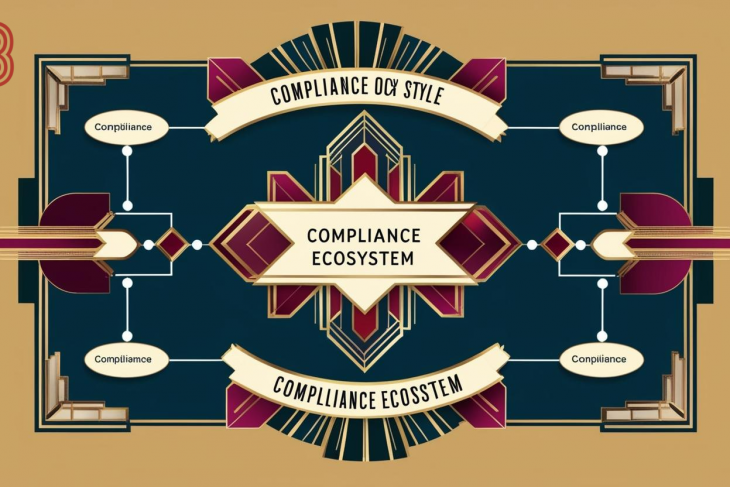
Introduction
Policy information is a critical component in the domain of risk management, serving as a structured set of guidelines, procedures, and regulations that organizations use to identify, assess, mitigate, and monitor risks. Effective risk management relies on well-defined policies that provide clarity, consistency, and accountability, helping organizations safeguard their assets, reputation, and stakeholders. This paper explores the significance of policy information in risk management, its key elements, and how it contributes to achieving organizational resilience and compliance.
Understanding Policy Information
Policy information encompasses the documentation of rules, principles, and strategies that guide decision-making and operational activities within an organization. It serves as a reference framework for employees, management, and stakeholders, ensuring that risks are managed in a systematic and consistent manner. Policy information typically includes:
Risk Assessment Protocols: Guidelines for identifying potential risks and assessing their impact.
Compliance Requirements: Regulatory frameworks that the organization must adhere to.
Mitigation Strategies: Preventive and corrective actions to minimize risk exposure.
Incident Response Procedures: Steps to follow in case of an adverse event.
Roles and Responsibilities: Clearly defined accountability and authority structures.
The Role of Policy Information in Risk Management
Policy information plays a pivotal role in various aspects of risk management. The following sections delve into the key roles it plays in ensuring effective risk mitigation and control.
1. Risk Identification and Assessment
A structured risk management policy helps organizations systematically identify potential risks. It provides methodologies and tools, such as risk matrices, heat maps, and scenario analysis, to assess the likelihood and impact of risks. Effective policy information ensures that risks are categorized based on their severity and probability, allowing decision-makers to prioritize them accordingly.
2. Regulatory Compliance and Legal Adherence
Regulatory requirements vary across industries and jurisdictions. Policy information ensures that an organization complies with legal obligations by outlining necessary steps for adherence to local, national, and international regulations. Failure to comply with legal and regulatory requirements can lead to penalties, reputational damage, and even legal actions. Organizations use policy information to maintain compliance with laws such as:
The General Data Protection Regulation (GDPR)
The Sarbanes-Oxley Act (SOX)
The Health Insurance Portability and Accountability Act (HIPAA)
The Occupational Safety and Health Administration (OSHA) regulations
3. Standardization and Consistency
A well-defined policy framework ensures consistency in how risks are managed across different departments and geographical locations. Standardization minimizes ambiguity and enhances coordination, enabling a more structured approach to mitigating risks. For instance, in financial institutions, standardized credit risk policies help maintain uniformity in assessing borrowers and mitigating potential losses.
4. Decision-Making and Governance
Policy information provides a decision-making framework for leaders and risk managers. By setting clear guidelines, policies empower executives to make informed choices regarding risk tolerance, investment strategies, and crisis management. Additionally, governance structures outlined in policies ensure accountability and transparency in risk-related decisions.
5. Risk Mitigation and Control Measures
Policies define specific controls and preventive measures to mitigate risks effectively. These may include:
Financial controls (e.g., budgetary restrictions, audit requirements)
Operational controls (e.g., supply chain monitoring, quality checks)
IT and cybersecurity measures (e.g., encryption, firewalls, access control)
Human resources policies (e.g., background checks, training programs)
By implementing these controls, organizations reduce vulnerabilities and enhance resilience.
6. Incident Response and Crisis Management
Despite proactive risk mitigation efforts, incidents can still occur. Policy information plays a crucial role in defining response strategies, ensuring swift and effective actions during crises. Organizations establish protocols for:
Business continuity planning (BCP)
Disaster recovery (DR)
Cyber incident response
Crisis communication strategies
Having a well-documented incident response policy ensures minimal disruption and facilitates faster recovery.
7. Training and Awareness
Risk management policies are ineffective without proper dissemination and training. Organizations use policy information to educate employees, stakeholders, and partners on risk-related best practices. Training programs, workshops, and awareness campaigns ensure that personnel understand their roles in risk mitigation and adhere to established protocols.
8. Monitoring, Auditing, and Continuous Improvement
Risk management is an ongoing process that requires continuous evaluation. Policies outline mechanisms for monitoring and auditing risk-related activities to ensure compliance and effectiveness. Key components include:
Regular risk assessments
Internal and external audits
Performance metrics and key risk indicators (KRIs)
Feedback loops for policy refinement
Industry-Specific Applications of Policy Information in Risk Management
Different industries face unique risks and require tailored policy frameworks. Below are examples of how policy information plays a crucial role in risk management across various sectors.
1. Financial Sector
Financial institutions rely on stringent policies to manage credit risk, market risk, and operational risk. Regulatory compliance with Basel III, anti-money laundering (AML) policies, and Know Your Customer (KYC) guidelines are critical to ensuring financial stability.
2. Healthcare Sector
Hospitals and healthcare providers must adhere to patient safety and data privacy regulations, such as HIPAA. Risk management policies in this sector address medical errors, infection control, and cybersecurity threats to electronic health records (EHRs).
3. Manufacturing and Supply Chain
Manufacturers use policies to manage supply chain disruptions, quality control risks, and occupational hazards. Policies ensure adherence to safety standards, environmental regulations, and labor laws.
4. Technology and Cybersecurity
IT companies and cybersecurity firms rely on policies to mitigate risks related to data breaches, phishing attacks, and system vulnerabilities. Policies include cybersecurity frameworks like the NIST Cybersecurity Framework and ISO 27001.
5. Energy and Environmental Management
The energy sector faces risks related to regulatory compliance, environmental sustainability, and operational safety. Policies guide organizations in managing climate risks, emissions, and resource conservation.
Challenges in Implementing Risk Management Policies
Despite the importance of policy information, organizations face several challenges in implementing effective risk management policies:
Resistance to Change: Employees and stakeholders may resist new policies due to perceived complexity or additional workload.
Keeping Policies Up-to-Date: Regulations and risks evolve, requiring frequent updates and revisions.
Balancing Risk and Innovation: Organizations must balance risk aversion with innovation and growth objectives.
Resource Constraints: Small and medium-sized enterprises (SMEs) may struggle with the costs of implementing comprehensive risk policies.
Integration with Organizational Culture: Policies must align with the organization’s culture and operational dynamics to be effective.
Summary
Policy information is an essential tool in risk management, providing a structured approach to identifying, mitigating, and responding to risks. By ensuring regulatory compliance, standardizing risk management practices, and fostering a culture of risk awareness, organizations enhance resilience and long-term sustainability. However, challenges such as resistance to change, policy maintenance, and resource constraints must be addressed to optimize the effectiveness of risk management policies. Ultimately, organizations that integrate robust policy frameworks into their risk management strategies are better equipped to navigate uncertainties and achieve their objectives.




















